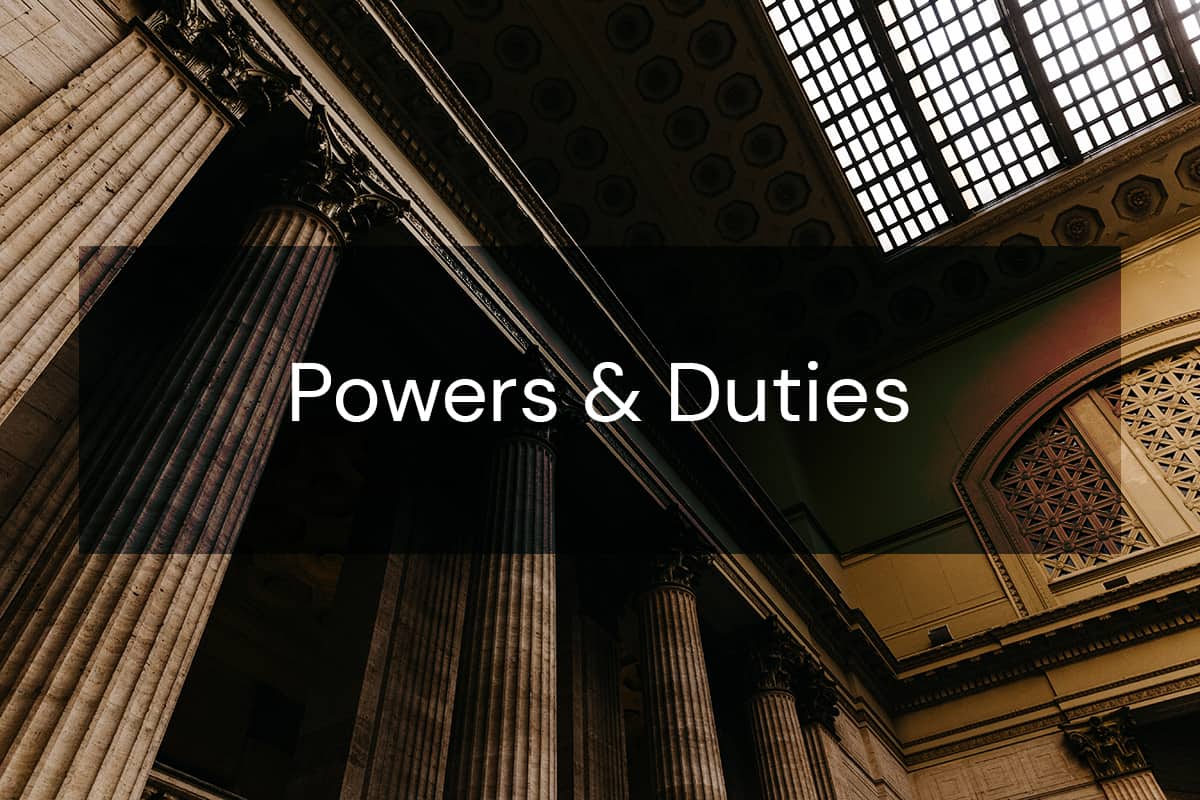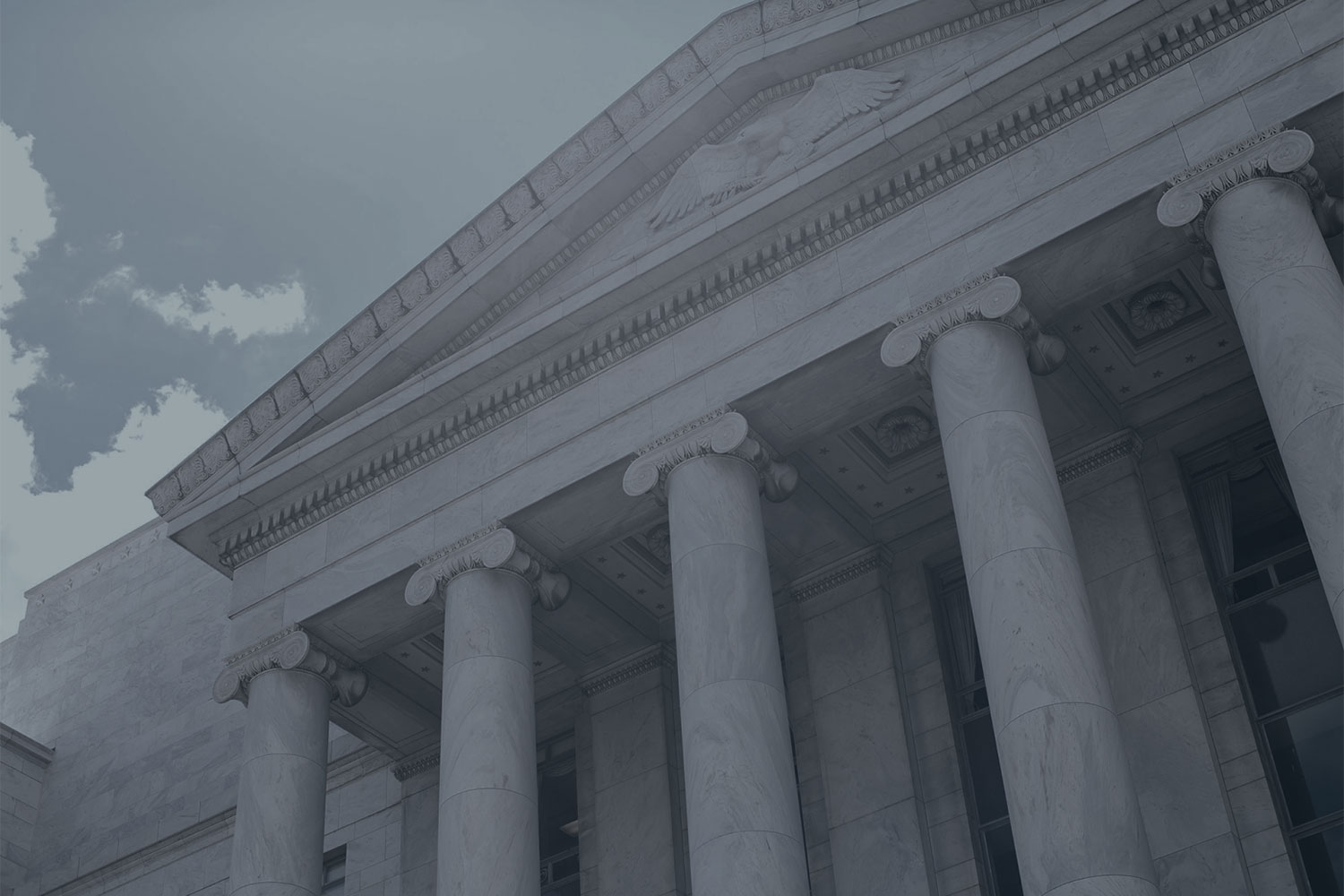-
Assistant Attorney General, Public Protection DivisionVermont Attorney General’s Office.
This article was originally published in the April 2020 edition of the NAGTRI Center for Consumer Protection Monthly newsletter.
The United States Patent and Trademark Office (USPTO) is the federal agency for granting U.S. patents and registering trademarks. Since Congress enacted the first patent law in 1790, the demand for protection of America’s intellectual property (IP) has evidenced the ingenuity of American inventors and entrepreneurs.
Under the U.S. IP system, American industry and creators have flourished, new products have been invented, new uses for old ones discovered, and employment opportunities created for millions of Americans. As documented in the comprehensive study, Intellectual Property and the U.S. Economy: 2016 Update,1 the strength and vitality of the U.S. economy is supported by effective mechanisms that protect new ideas and investments in innovation and creativity.
In addition to its administrative functions, the USPTO advises the president and the executive branch on IP policy, protection, and enforcement, and promotes effective IP protection around the world. The USPTO furthers this goal by working with other agencies and governments to support the establishment of high-quality IP systems internationally, providing training, education, and capacity-building programs designed to foster respect for IP, and encouraging the development of effective enforcement regimes by trading partners.
The USPTO’s Office of Policy and International Affairs (OPIA) is composed of experienced and seasoned IP attorneys. The OPIA enforcement team provides policy advocacy, capacity-building, and technical expertise in the areas of domestic and international IP enforcement and trade. This includes policy advice and legislative analysis on domestic and international IP enforcement issues, including with respect to trade secrets; technical assistance on civil, administrative, criminal, and border enforcement; and promoting public awareness and education on the protection and enforcement of IP, including judicial case management of disputes.
Collaboration with National Association of Attorneys General
The USPTO and National Association of Attorneys General (NAAG) have a history of working together on intellectual property training and capacity building dating back to 2008. The current partnership dates from October 2018 and has so far included USPTO attorneys participating as panelists at NAAG events, a webinar, and regional workshops in Dallas, Texas, and Alexandria, Virginia. A workshop planned for April 2020, in Denver, Colorado, had to be postponed due to the coronavirus pandemic, but will be rescheduled to a future date. The hope is to be able to continue to work together on training activities that highlight the strong linkage between a robust intellectual property system and strong consumer protection.
Trademarks and Consumer Protection
Trademarks are a tool for identifying the source of a product. This is not just a convenient aspect of branding, but a critical role for conveying information to consumers, information on which they can rely.
Federal and state trademark laws strive to accomplish two objectives: 1) provide trademark owners with a solid legal foundation to build a reputation based on quality, i.e., the right to exclude others from using their trademark on identical or similar goods; and 2) protect consumers by ensuring that what they purchase is genuine, safe and efficacious.
Federal and state agencies balance these two objectives, but consumer protection has been the focus of particular attention in recent years. The news is rife with stories of counterfeit products flooding the marketplace, particularly on online platforms, with a resulting loss of confidence, and in many cases, risky and lethal outcomes for consumers.
When Bad Actors Use Good IP
Consumers come in all shapes and sizes, and consumer protection is not always about big-ticket items. Often, misused or misappropriated IP can be the visual bait that attracts consumers to purchase a dangerous product.
As reported in the media, a recent investigation conducted by Washington Attorney General Bob Ferguson revealed that certain children’s school supplies sold on Amazon.com had illegal levels of the toxic metals lead and cadmium.2 Some pencil pouches had component parts that contained more than 80 times the legal limit of lead. Notwithstanding the legal limits under state and federal laws, the Centers for Disease Control (CDC) advises that there is no safe blood level limit for children, mainly because of their small size and developing brains.3
Although trademark counterfeiting or copyright piracy were not cited in the published reports about the investigation as being grounds for potential legal action, they could have been, since Spider-Man®’s iconic image prominently featured on the products. Why did the manufacturers pick Spider-Man® you may ask?
There is little doubt that using infringing marks and pirated artwork aids in marketing these dangerous products to their target audience of children and parents. Well known and famous marks, like virtually the entire army of Marvel® and Disney® characters, serve to draw the attention of children (and probably many adults as well), and distract them from what may be a dangerous or unsafe product. Counterfeiters understand human psychology and take advantage of it in marketing their wares, especially to the youngest consumers.
So, when evaluating cases of alleged violations of consumer protection, enforcers should not look past the IP being infringed. It is often evidence of the clear intent by the counterfeiters to defraud and distract consumers, lulling them to rely on the reputation of a well-known brand or character protected by IP.
It is a Global Problem
A recent study by the Organization for Economic Co-operation and Development (OECD) estimated that 3.3% of world trade (or roughly $509 billion worth of goods) was counterfeit or pirated.4 The true number is actually much higher for counterfeit and pirated goods manufactured and consumed domestically, and higher still when accounting for the social costs attributed to the trade in these types of illicit goods, such as displaced workers, lost government taxes, and medical costs.5
The current public health emergency has led to an unfortunate but not unexpected surge in fraudulent activity, including the advertising and sale of counterfeit treatments and products.6 This is an immediate and growing concern as criminals seek to take advantage of the high demand for healthcare and consumer products. A recent survey shows that while 68% of consumers are concerned about counterfeit or poor-quality products being sold online during the coronavirus outbreak, nearly 45% of consumers are not aware of the issue.7
The International Criminal Police Organization (INTERPOL) recently conducted its eighth Operation Pangea, collaborating with police, customs and health regulatory authorities from 90 countries to take action against the illicit online sale of medicines and medical products.8 The results concerning the current pandemic were alarming. In one instance, more than 34,000 counterfeit and substandard masks, “corona spray”, “coronavirus packages” and “coronavirus medicine” were seized by authorities. “Once again, Operation Pangea shows that criminals will stop at nothing to make a profit. The illicit trade in such counterfeit medical items during a public health crisis shows their total disregard for people’s wellbeing, or their lives,” said Jürgen Stock, INTERPOL’s Secretary General.9
USPTO Information and Resources for State Attorney General Offices
Beyond access to information concerning trademark registrations, the USPTO provides certain information and resources that may be of interest or assistance to state Attorney General (AG) offices in the area of consumer protection.
Unauthorized Practice of Law
The unauthorized practice of law may harm consumers, and some of the bad actors in the IP world engage in it.10 For patent matters, the USPTO Office of Enrollment and Discipline (OED) maintains a public database of individuals with licenses to practice before the USPTO.11 It can also initiate a formal investigation into the alleged misconduct by a registered patent attorney upon receipt of a written submission from any source, including state officials.
In trademark matters, only attorneys in good standing before the highest court of any state, the District of Columbia, Puerto Rico, or other U.S. territories, may practice before the agency. The Commissioner for Trademarks may exclude an individual from serving as an attorney, signatory, correspondent, or domestic representative before the USPTO,12 and maintains a list of excluded representatives and those subject to “show-cause orders” who are under investigation.13
Inventor Scams
Although the USPTO does not investigate complaints or participate in legal proceedings against invention promoters or promotion firms, the agency will accept complaints and forward them for response. Unless a complainant requests confidentiality, the USPTO is required to provide a public forum for the publication of such complaints and any responses received.14
Fraudulent Solicitations
The USPTO and state officials often collaborate to protect consumers from fraudulent solicitations regarding certain maintenance fees that the USPTO charges.
Fees are required to maintain U.S. patents and to renew trademark registrations. Maintenance requirements for patents or trademark registrations and the associated fees can be found on the USPTO’s website. Such fees are paid directly to the USPTO either online by registrants or patentees or with the assistance of counsel or registered patent practitioners.
There are unscrupulous companies that send solicitations to patent and trademark owners concerning maintenance or renewal requirements.15 The notices frequently appear to be invoices and typically specify fees “due” that are higher than the official USPTO required fees. A webpage with consumer friendly information and FAQs is available on the USPTO website.16
If a consumer receives a fraudulent solicitation from such a company, he or she may file an online complaint with the Federal Trade Commission (FTC). Although the FTC does not resolve individual consumer complaints, it may initiate investigations and prosecutions based on widespread complaints about particular companies or business practices.
In addition, consumers may file complaints about such fraudulent solicitations or activities with state or local consumer protection agencies or offices, including state AG offices.17 The USPTO is always available to assist AG offices in investigating such illegal activities aimed at consumers.
Protecting Recognized Native American Tribal Insignia
In many states, the AG office may interact on a regular basis with recognized Native American tribal governments on legal matters, and may, in some circumstances, advise on or pursue legal measures involving IP owned by such tribes.
At the direction of Congress, the USPTO established a database to record the official insignia of federally and state-recognized Native American tribes that choose to submit their insignia.18 While this database is a collection of insignia, not trademarks, it is used by examining attorneys when reviewing trademark applications to determine whether a new application resembles an insignia of a Native American tribe. This may lead the USPTO to conclude that use of such a mark would suggest a false connection with the tribe and provide a basis to refuse the application under Section 2(a) of the Trademark Act, 15 U.S.C. §1052(a).
Trademark Documents for Law Enforcement Officials
The USPTO provides certified copies of trademark registration certificates and other related documents free of charge for official government use in criminal counterfeit investigations and court proceedings.19 The USPTO also provides a public search tool, to search pending applications and marks registered with the USPTO.20 However, the USPTO database does not include any marks protected exclusively under state or common law.
Potential State Issues/Clients
Many state entities may own registered trademarks or patents. Many have strong and well-known brands or service marks and may encounter trademark infringement and counterfeiting issues.
For example, state tourism boards, departments of agriculture, and state universities or hospitals may all have trademarks or certification marks for promotional campaigns, agricultural products, or even athletic teams. Both domestic and overseas counterfeiters, especially around the time of major collegiate athletic events, often steal well-known university names and seals or logos. The USPTO can provide information and assistance in cases where such marks are being infringed.
USPTO Overseas IP Attachés
The USPTO maintains a corps of overseas IP attachés assigned to U.S. embassies or consulates, who represent the U.S. government and serve as local experts and advisors on all aspects of IP protection and enforcement. These IP attachés may be able to assist state AG offices with IP-related matters that have an international dimension.21
Conclusion
In conclusion, the USPTO has a solid working relationship with NAAG, and is in a position to assist and support state AG offices with a variety of matters involving intellectual property and consumer protection.
- Intellectual Property and the U.S. Economy: 2016 Update (2016), available at: https://www.uspto.gov/sites/default/files/documents/IPandtheUSEconomySept2016.pdf. (The report found that IP-intensive industries support at least 45 million U.S. jobs and contribute more than $6 trillion dollars to, or 38.2 percent of, U.S. gross domestic product (GDP). [↩]
- AG Ferguson: Amazon Must Remove Toxic School Supplies, Kid’s Jewelry from Marketplace Nationwide (2019), https://www.atg.wa.gov/news/news-releases/ag-ferguson-amazon-must-remove-toxic-school-supplies-kid-s-jewelry-marketplace. [↩]
- State and federal laws prohibit the sale or distribution of children’s products that contain lead or cadmium above certain levels. The CDC provides information on childhood lead poisoning prevention at: https://www.cdc.gov/nceh/lead/faqs/lead-faqs.htm. [↩]
- The OECD-EUIPO report – Trends in Trade in Counterfeit and Pirated Goods (2019) – is available at
http://www.oecd.org/gov/risk/trends-in-trade-in-counterfeit-and-pirated-goods-g2g9f533-en.htm. [↩]
- The Economic Costs of Counterfeiting and Piracy (Frontier Economics) (January 2017), available at: https://cms.iccwbo.org/content/uploads/sites/3/2017/02/ICC-BASCAP-Frontier-report-2016-Executive-Summary.pdf. [↩]
- In this article “counterfeit” is used in a generic sense, both to include trademark infringement goods, as well as products that claim to prevent, treat, or cure COVID-19, but are not either authorized or proven safe and effective for those uses. See, e.g.: Coronavirus outbreak sparks a new trend in counterfeit medical items, available at https://www.interpol.int/en/News-and-Events/News/2020/Global-operation-sees-a-rise-in-fake-medical-products-related-to-COVID-19, FBI Sees Rise in Fraud Schemes Related to the Coronavirus (COVID-19) Pandemic available at https://www.ic3.gov/media/2020/200320.aspx e. [↩]
- Red Points Impact of Covid-19 On Ecommerce Sales Survey, at: https://www.redpoints.com/pdfs/market-research-impact-of-covid-19-on-ecommerce-sales/?utm_campaign=HS284-market-research-survey-impact-of-covid-9-on-ecommerce-sales&utm_medium=email&_hsmi=84691783&_hsenc=p2ANqtz-_KXO0X8sOU11ZaL9gXi53LxFBQjYdtj-ZtCHwLlocKYxHxgibn05yKKsXyfyIzVAccGKAF&utm_content=84691783&utm_source=hs_automation. [↩]
- Global operation sees a rise in fake medical products related to COVID-19, at: https://www.interpol.int/en/News-and-Events/News/2020/Global-operation-sees-a-rise-in-fake-medical-products-related-to-COVID-19. [↩]
- Id. [↩]
- In practicing before the USPTO, only registered patent attorneys and agents, who have passed the registration examination (“patent bar”), and individuals granted limited recognition, may represent patent applicants before the USPTO. 37 C.F.R. §§ 11.5-11.9. [↩]
- Available at: https://oedci.uspto.gov/OEDCI/practitionerhome.jsp. [↩]
- 35 U.S.C. §§ 2, 3(b)(2)(A), 32. [↩]
- The USPTO maintains a list of excluded representatives and those subject to “show-cause orders” who are under investigation. It is available at: https://www.uspto.gov/trademark/trademark-updates-and-announcements/orders-issued-commissioner-trademarks. [↩]
- 35 U.S.C. § 297. [↩]
- All official correspondence concerning U.S. patent or trademark matters comes from the “United States Patent and Trademark Office” in Alexandria, Virginia, with zip code 22313, or by email from the official USPTO government domain (@uspto.gov). [↩]
- Available at: https://www.uspto.gov/trademarks-getting-started/caution-misleading-notices. [↩]
- Consumers wishing to file a complaint may locate their attorney general’s intake portal at consumerresources.org, the website of the Center for Consumer Protection of the National Attorney Generals Training and Research Institute. [↩]
- Available at: https://www.uspto.gov/trademark/laws-regulations/native-american-tribal-insignia/native-american-tribal-insignia-database. [↩]
- Information and request form are available at: https://www.uspto.gov/trademark/trademark-documents-prosecutors-official-government-use-only. [↩]
- Trademark searches can be done at: https://www.uspto.gov/trademarks-application-process/search-trademark-database. [↩]
- For information on the USPTO IP Attaché Program, see: https://www.uspto.gov/ip-policy/ip-attache-program. [↩]





